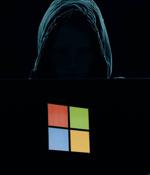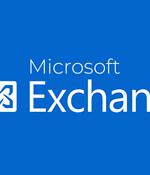Security News

Internet snoops has been caught concealing spyware in an old Windows logo in an attack on governments in the Middle East. The Witchetty gang used steganography to stash backdoor Windows malware, dubbed Backdoor.

Microsoft is working on updating Microsoft Defender for Office 365 to allow Microsoft Teams users to alert their organization's security team of any dodgy messages they receive.Microsoft Defender for Office 365 protects organizations from malicious threats from email messages, links, and collaboration tools.

Just having your Exchange server accessible to email users over the internet is not enough on its own to expose you to attack, because so-called unauthenticated invocation of these bugs is not possible. According to Microsoft, blocking TCP ports 5985 and 5986 on your Exchange server will limit attackers from chaining from the first vulnerability to the second.

Attackers are leveraging two zero-day vulnerabilities to breach Microsoft Exchange servers."At this time, Microsoft is aware of limited targeted attacks using the two vulnerabilities to get into users' systems. In these attacks, CVE-2022-41040 can enable an authenticated attacker to remotely trigger CVE-2022-41082. It should be noted that authenticated access to the vulnerable Exchange Server is necessary to successfully exploit either of the two vulnerabilities."

Microsoft officially disclosed it investigating two zero-day security vulnerabilities impacting Exchange Server 2013, 2016, and 2019 following reports of in-the-wild exploitation. "The first vulnerability, identified as CVE-2022-41040, is a Server-Side Request Forgery vulnerability, while the second, identified as CVE-2022-41082, allows remote code execution when PowerShell is accessible to the attacker," the tech giant said.

Microsoft has confirmed that two recently reported zero-day vulnerabilities in Microsoft Exchange Server 2013, 2016, and 2019 are being exploited in the wild. "At this time, Microsoft is aware of limited targeted attacks using the two vulnerabilities to get into users' systems."

Microsoft has claimed a North Korean crew poses as LinkedIn recruiters to distribute poisoned versions of open source software packages. Dubbed "ZINC", the threat actors have previously run long-term phishing schemes targeting media, defence and aerospace, and IT services organizations in the US, UK, India, and Russia.

Security researchers are warning of previously undisclosed flaws in fully patched Microsoft Exchange servers being exploited by malicious actors in real-world attacks to achieve remote code execution on affected systems."We detected webshells, mostly obfuscated, being dropped to Exchange servers," the company noted.

Threat actors are exploiting yet-to-be-disclosed Microsoft Exchange zero-day bugs allowing for remote code execution, according to claims made by security researchers at Vietnamese cybersecurity outfit GTSC, who first spotted and reported the attacks. The researchers reported the security vulnerabilities to Microsoft privately three weeks ago through the Zero Day Initiative, which tracks them as ZDI-CAN-18333 and ZDI-CAN-18802 after its analysts validated the issues.

Threat actors are exploiting yet-to-be-disclosed Microsoft Exchange zero-day bugs allowing for remote code execution, according to claims made by security researchers at Vietnamese cybersecurity outfit GTSC, who first spotted and reported the attacks. The researchers reported the security vulnerabilities to Microsoft privately three weeks ago through the Zero Day Initiative, which tracks them as ZDI-CAN-18333 and ZDI-CAN-18802 after its analysts validated the issues.